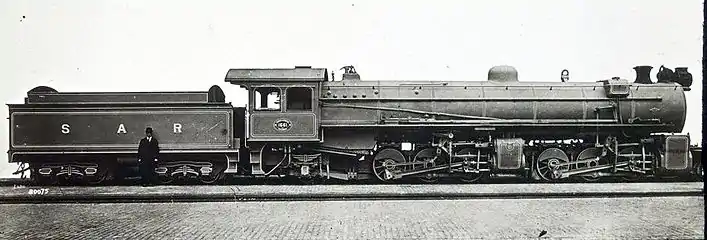| South African Class MH 2-6-6-2 | |||||||||||||||||||||||||||||||||||||||||||||||||||||||||||||||||||||||||||||||||||||||||||||||||||||||||||||||||||||||||
|---|---|---|---|---|---|---|---|---|---|---|---|---|---|---|---|---|---|---|---|---|---|---|---|---|---|---|---|---|---|---|---|---|---|---|---|---|---|---|---|---|---|---|---|---|---|---|---|---|---|---|---|---|---|---|---|---|---|---|---|---|---|---|---|---|---|---|---|---|---|---|---|---|---|---|---|---|---|---|---|---|---|---|---|---|---|---|---|---|---|---|---|---|---|---|---|---|---|---|---|---|---|---|---|---|---|---|---|---|---|---|---|---|---|---|---|---|---|---|---|---|---|
 SAR Class MH no. 1661, c. 1915 | |||||||||||||||||||||||||||||||||||||||||||||||||||||||||||||||||||||||||||||||||||||||||||||||||||||||||||||||||||||||||
| |||||||||||||||||||||||||||||||||||||||||||||||||||||||||||||||||||||||||||||||||||||||||||||||||||||||||||||||||||||||||
| |||||||||||||||||||||||||||||||||||||||||||||||||||||||||||||||||||||||||||||||||||||||||||||||||||||||||||||||||||||||||
| |||||||||||||||||||||||||||||||||||||||||||||||||||||||||||||||||||||||||||||||||||||||||||||||||||||||||||||||||||||||||
| |||||||||||||||||||||||||||||||||||||||||||||||||||||||||||||||||||||||||||||||||||||||||||||||||||||||||||||||||||||||||
The South African Railways Class MH 2-6-6-2 of 1915 was an articulated Mallet-design steam locomotive.
In 1915, the South African Railways placed five Class MH Mallet articulated compound steam locomotives with a 2-6-6-2 wheel arrangement in coal hauling service.[1][2][3]
Manufacturer
During 1914, the requirement for locomotives with a high tractive effort to cope with the increasing volume of coal traffic between Witbank and Germiston led to the introduction of a heavy Mallet compound superheated engine with a 2-6-6-2 wheel arrangement.[2]

The Class MH Mallet articulated locomotive was designed in detail in the locomotive drawing office in Pretoria under the personal direction of D.A. Hendrie, Chief Mechanical Engineer (CME) of the South African Railways (SAR) from 1910 to 1922. The draughtsman, specially detached for the work, was J.R. Boyer who was later to become the Chief Locomotive Draughtsman of the SAR. Five of these very large locomotives were ordered from North British Locomotive Company and delivered in 1915, numbered in the range from 1661 to 1665. They were erected in the Salvokop shops in Pretoria and were placed in service in September 1915.[1][2][3][4]
Characteristics
The main bar frames, 4+1⁄2 inches (114 millimetres) thick, were machined from a 2 ft 2+1⁄2 in (673 mm) wide solid. The hind part of this frame was rigidly secured to the boiler through the high-pressure cylinder saddle castings and terminated just in front of the firebox outer throat plate. From this point rearwards, the frame was of the plate type and arranged to carry the spring gear and other fittings for the trailing Bissel truck.[1][2][3]
The locomotives were superheated and had Walschaerts valve gear, controlled by steam reversing gear. The cylinders and steam chests were formed in three separate castings. The high-pressure cylinders were arranged with piston valves, while the low-pressure cylinders were arranged with Richardson balanced type slide valves, arranged above the cylinders. The steam chest covers of the low-pressure cylinders were designed with inclined joint faces to facilitate the handling of the valve and refacing of the ports during servicing.[2]
As built, the boiler pressure was set to blow off at 200 pounds per square inch (1,379 kilopascals), which gave the engine a tractive effort of 53,750 pounds-force (239.1 kilonewtons) at 50% of boiler pressure. The setting was later reduced to 180 pounds per square inch (1,241 kilopascals), which reduced the tractive effort to 48,370 pounds-force (215.2 kilonewtons) at 50% of boiler pressure.[1][2]
At the time of their introduction, the Class MH was the largest and most powerful locomotive in the world on Cape gauge. It attracted the attention of locomotive engineers throughout the world as an outstanding achievement for locomotive power on 3 feet 6 inches (1,067 millimetres) gauge.[1][2]
Its 105 long tons 13 hundredweight (107,300 kilograms) adhesive weight and the SAR's ultra-conservative practice of reporting a Mallet's tractive effort at only 50% of boiler pressure resulted in a much lower than actual starting tractive effort of 48,370 pounds-force (215.2 kilonewtons). The Class MH was almost certainly capable of exerting more than 60,000 pounds-force (270 kilonewtons) tractive effort at starting.[5]
Service
They were initially placed in service on the coal line between Witbank and Germiston as intended to supplement the other Mallets already working on that line. In the 1930s they were transferred to Natal to work on the line between Vryheid and Glencoe, also hauling coal. They were outstanding in their performance and remained in Natal for the rest of their service lives until they were all retired and scrapped by 1940.[1][3][5]
Illustration
 Class MH 2-6-6-2 Mallet no. 1661, c. 1915
Class MH 2-6-6-2 Mallet no. 1661, c. 1915
References
- 1 2 3 4 5 6 Holland, D. F. (1972). Steam Locomotives of the South African Railways. Vol. 2: 1910-1955 (1st ed.). Newton Abbott, England: David & Charles. pp. 30–32. ISBN 978-0-7153-5427-8.
- 1 2 3 4 5 6 7 Espitalier, T.J.; Day, W.A.J. (1945). The Locomotive in South Africa – A Brief History of Railway Development. Chapter VII – South African Railways (Continued). South African Railways and Harbours Magazine, May 1945. pp. 350, 356.
- 1 2 3 4 Paxton, Leith; Bourne, David (1985). Locomotives of the South African Railways (1st ed.). Cape Town: Struik. p. 87. ISBN 0869772112.
- ↑ North British Locomotive Company works list, compiled by Austrian locomotive historian Bernhard Schmeiser
- 1 2 Soul of A Railway, System 7, Western Transvaal, based in Johannesburg, Part 21: Witbank Line by Les Pivnic, Eugene Armer, Peter Stow and Peter Micenko. Captions 3–4. (Accessed on 4 May 2017)